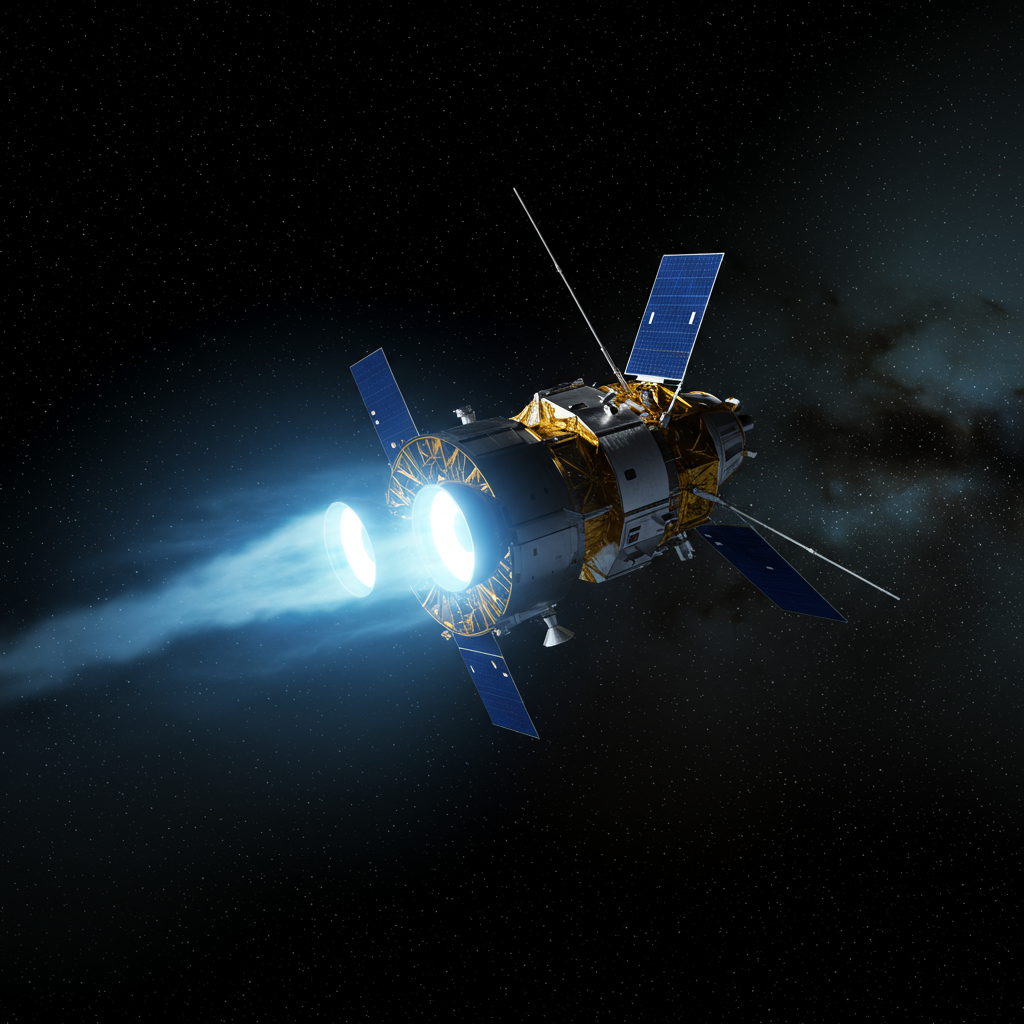A significant shift in federal spending priorities is on the horizon. Proposed budget recommendations for the 2026 fiscal year include unprecedented cuts to the National Aeronautics and Space Administration (NASA). These proposals, originating from President Donald Trump’s administration, particularly target the agency’s vital science funding.
Experts warn these reductions could dramatically alter the landscape of U.S. space exploration and scientific leadership. If enacted, the cuts would reportedly drop NASA’s budget to levels not seen since 1961. Some analyses suggest this represents the largest percentage cut ever proposed for the agency. The potential consequences are far-reaching, impacting ongoing missions, future projects, and the thousands of scientists, engineers, and support staff whose work drives American innovation in space.
Decoding the Proposed NASA Budget Cuts
The core of the proposed changes lies in a steep reduction to NASA’s science budget. Reports indicate a potential cut of nearly 50% in this critical area. This isn’t just an adjustment; it’s described as a potentially devastating blow.
The administration’s rationale, outlined in a letter to Senator Susan Collins, frames previous federal funding as being “laden with spending contrary to the needs of ordinary working Americans.” They suggested it tilted towards funding “niche non-governmental organizations and institutions of higher education committed to radical gender and climate ideologies antithetical to the American way of life.” This framing signals a clear ideological motivation behind the proposed defunding of certain scientific endeavors.
The severity of a near-50% cut is hard to overstate. Unlike typical budget fluctuations, this magnitude of reduction threatens to dismantle established programs and research paths. The long-term effects could extend for decades, impacting scientific progress and technological development.
The Threat to Colorado’s Space Sector, Including maven
Colorado stands as a major hub for the aerospace industry. The state boasts over 2,000 businesses in the sector, directly employing 55,000 people. NASA contracts alone generated over $5 billion in economic activity here in fiscal year 2023. They also supported 21,600 jobs and contributed significantly to state tax revenue. Proposed federal cuts could severely jeopardize this economic engine.
Much of Colorado’s contribution to space exploration is tied to the University of Colorado Boulder (CU Boulder). The university is home to key researchers and projects funded by NASA. Scientists and staff at CU Boulder are deeply concerned about how the proposed budget would impact their work and the state’s economy.
Dr. Shannon Curry, an associate professor at CU Boulder, highlighted the connection between space leadership and jobs. She noted that the aerospace industry in Colorado is a major source of employment. Cuts to NASA directly threaten this workforce and the economic output it generates.
MAVEN Mission Faces Cancellation
Among the projects most directly targeted is NASA’s Mars Atmosphere and Volatile EvolutioN (MAVEN) mission. This crucial Mars orbiter is led by scientists at CU Boulder. Dr. Shannon Curry serves as the mission’s Principal Investigator.
MAVEN has been studying the Martian atmosphere since 2014. Its primary goal is to understand how Mars lost most of its atmosphere over billions of years. This research provides vital clues about the planet’s climate history. It also helps scientists determine if Mars was ever capable of supporting life.
Curry describes MAVEN as the premier observer of atmospheric escape in the solar system. Its data is essential for understanding what Mars was like in the past, what it’s like now, and what it might become. This also offers potential insights into the future of Earth’s own atmosphere. The mission is funded through NASA’s Mars Exploration Program.
The proposed budget for fiscal year 2026 explicitly includes canceling dozens of active NASA missions. Shockingly, the MAVEN mission is among those slated for termination.
Consequences of Cutting Critical Missions
Canceling a mission like MAVEN would have profound consequences. For the team at CU Boulder and across the nation who have worked on MAVEN for over a decade, it would be professionally and personally devastating. MAVEN employs at least 150 people at CU Boulder alone, including professors, students, postdocs, scientists, and engineers. Many of these individuals could face job losses if the cuts take effect.
Dr. Curry emphasized that dismantling these expert teams represents a significant loss of specialized knowledge. This expertise takes years to build and is difficult to replace.
Beyond the immediate human impact, MAVEN serves a critical function for all U.S. Mars exploration. It acts as America’s primary telecommunications relay for the red planet. MAVEN transmits data from NASA’s rovers on the Martian surface back to Earth. Cutting MAVEN would jeopardize the entire Mars Exploration Program’s ability to receive data from its assets on the ground. This dependency on MAVEN highlights its strategic importance.
Dr. Curry also pointed out the business implications. If MAVEN were decommissioned, it couldn’t simply be turned back on later. Rebuilding such a complex mission from scratch would cost over a billion dollars. Continuing to operate it, while still expensive, is significantly less than the cost of replacement. From a purely financial standpoint, cancellation appears to be a poor business decision.
Broader Impacts on U.S. Science and Leadership
The proposed cuts extend beyond MAVEN and the Mars program. They signal a potential broader retreat from scientific leadership for the United States. Solar scientist Lisa Upton warned that if these cuts proceed, the U.S. could lose its long-held position as a global leader in science and technology.
Upton noted that even established scientists are considering leaving the country due to declining job opportunities in the field. This “brain drain” represents a loss not just for the current scientific community but for future generations as well. Encouraging students to enter space science becomes difficult when the government suggests those jobs aren’t valuable.
CU Boulder has involvement in other missions also targeted. The Magnetospheric Multiscale Mission (MMS), which studies Earth’s magnetic field connections to the Sun, and the Juno spacecraft orbiting Jupiter are also at risk. CU Boulder’s Laboratory for Atmospheric and Space Science (LASP) plays a role in these missions, handling operations, data collection, and analysis. Canceling work on these spacecraft would mean ceasing associated research funding.
David Brain, chair of Astrophysical and Planetary Sciences at CU Boulder, expressed particular concern for students and postdocs. Their funding often comes directly from mission grants. Cuts would force them to find alternative funding or even change their research focus. This disrupts the pipeline of early-career scientists crucial for future endeavors.
Cuts Beyond NASA: Climate Science Hit Hard
The budget proposals don’t only target NASA. Other science agencies face steep reductions as well. The National Oceanic and Atmospheric Administration (NOAA) is slated for significant cuts. This agency is responsible for climate monitoring, weather forecasting, and oceanic research.
Leaked documents suggest a 27% cut to NOAA’s overall budget. Even more drastically, NOAA’s Office of Oceanic and Atmospheric Research (OAR) faces a proposed 74% reduction. OAR is NOAA’s primary research arm, funding climate modeling, cloud monitoring, and hurricane forecasting. These cuts would effectively eliminate funding for many OAR components involved in climate, weather, or ocean research. A $50 million program assisting communities with climate science applications like tracking droughts would also end. Critics argue this dismantling of OAR moves away from essential long-term climate research, potentially jeopardizing public safety and economic security.
Beyond NOAA, other agencies like the National Science Foundation (NSF), National Institutes of Health (NIH), Centers for Disease Control and Prevention (CDC), and Environmental Protection Agency (EPA) also face proposed reductions.
Other Space and Science Projects at Risk
Several other significant space and science projects are specifically identified for defunding:
Nancy Grace Roman Space Telescope: This next-generation space telescope, designed to study dark energy and exoplanets, is nearing completion. Previous administrations also attempted to cut its funding, but Congress blocked those efforts. The new proposal again targets this nearly completed, multi-billion dollar project.
Earth-Observing Satellites: Both NASA and NOAA have planned new satellite programs crucial for monitoring aerosols, clouds, sea-level rise, and providing fundamental weather data. Proposals suggest halving NASA’s Earth science budget and canceling NOAA’s geostationary weather satellite program. Climate instruments could be removed from future satellites.
Missions to Venus: Two planned NASA missions to Venus, DAVINCI and VERITAS, aimed at exploring our nearest planetary neighbor, are also targeted for cancellation.
Space Traffic Control: A civilian office established to manage growing satellite traffic and prevent collisions could see its budget slashed from $65 million to $10 million. The proposal suggests moving this function outside the government, raising questions about who would manage increasingly crowded orbits.
Contrasting Priorities: Human Spaceflight Boosted
Interestingly, while science programs face severe cuts, the proposed budget significantly increases funding for human spaceflight. Plans for returning to the Moon and future missions focused on Mars are allocated substantial funds. This suggests a potential reorientation of NASA’s focus.
Historically, NASA has encompassed aeronautics, robotics, scientific exploration, and Earth sciences alongside human spaceflight. This budget proposal represents an unprecedented focus on crewed missions, potentially at the expense of other scientific disciplines that also benefit the public.
Political Reality and Uncertainty
Presidential budget proposals are recommendations, and Congress ultimately holds the power of the purse. However, the political climate can influence how closely Congress aligns with the administration’s priorities.
Adding to the uncertainty, the spending bill for the current fiscal year (ending September 2025) reportedly granted the administration considerable flexibility in how it spends the remaining budget. This lack of detailed spending instructions means some programs, including climate research, could potentially see funding halted before the 2026 budget is even finalized by Congress. Experts warn this leeway allows for potential “damage” even before formal cuts are approved.
The debate over these proposed cuts highlights fundamental disagreements over the value of federal investment in science, climate research, and space exploration. While critics call it an “assault on science,” proponents argue it’s about realigning priorities and reducing spending on areas deemed less critical or ideologically opposed.
Frequently Asked Questions
What specific NASA missions are threatened by the proposed cuts?
The proposed fiscal year 2026 budget targets numerous active and planned NASA science missions for cancellation. Key missions explicitly mentioned as being at risk include the MAVEN Mars orbiter, the Magnetospheric Multiscale (MMS) mission, the Juno Jupiter orbiter, the Nancy Grace Roman Space Telescope, and two planned missions to Venus (DAVINCI and VERITAS). Additionally, next-generation Earth-observing satellite programs at both NASA and NOAA face potential elimination or drastic reduction. Experts note that potentially dozens of active missions could end.
How could proposed NASA funding cuts impact Colorado’s economy and jobs?
Colorado has a large and robust aerospace industry, supporting over 55,000 direct jobs and generating billions in economic output ($5 billion in 2023 from NASA contracts alone). Many of these jobs and economic benefits are tied to NASA-funded projects and research conducted at institutions like the University of Colorado Boulder (CU Boulder). Cutting missions led by or involving CU Boulder, such as MAVEN (which employs at least 150 people locally), would directly lead to job losses and a decrease in economic activity within the state’s critical aerospace sector.
What are the long-term consequences of canceling active NASA science missions?
Canceling active missions like MAVEN results in the immediate loss of valuable scientific data collection. For MAVEN, this means losing its role as a critical telecom relay for Mars rovers and ending insights into the Martian atmosphere vital for future human exploration. Beyond individual missions, cancellation leads to the dispersal of expert teams, making it difficult and expensive (over a billion dollars for MAVEN) to potentially restart work later. This loss of expertise contributes to a potential “brain drain,” diminishes U.S. leadership in specific scientific fields, discourages future scientists, and can have long-lasting negative impacts on innovation and technological development.
Conclusion
The proposed budget cuts for NASA and other science agencies represent a dramatic potential shift in U.S. federal spending. While human spaceflight may see increased investment, the proposed slashing of science funding, particularly impacting critical missions like CU Boulder’s MAVEN Mars orbiter and vital climate research at NOAA, signals a stark reprioritization. Experts warn of devastating consequences, including significant job losses in hubs like Colorado, the erosion of American scientific leadership, and a long-term setback for understanding our planet and the universe. As the budget process unfolds, the debate over the value and future of federally funded science is set to intensify. The fate of numerous crucial research endeavors, and the expertise built over decades, hangs in the balance.



